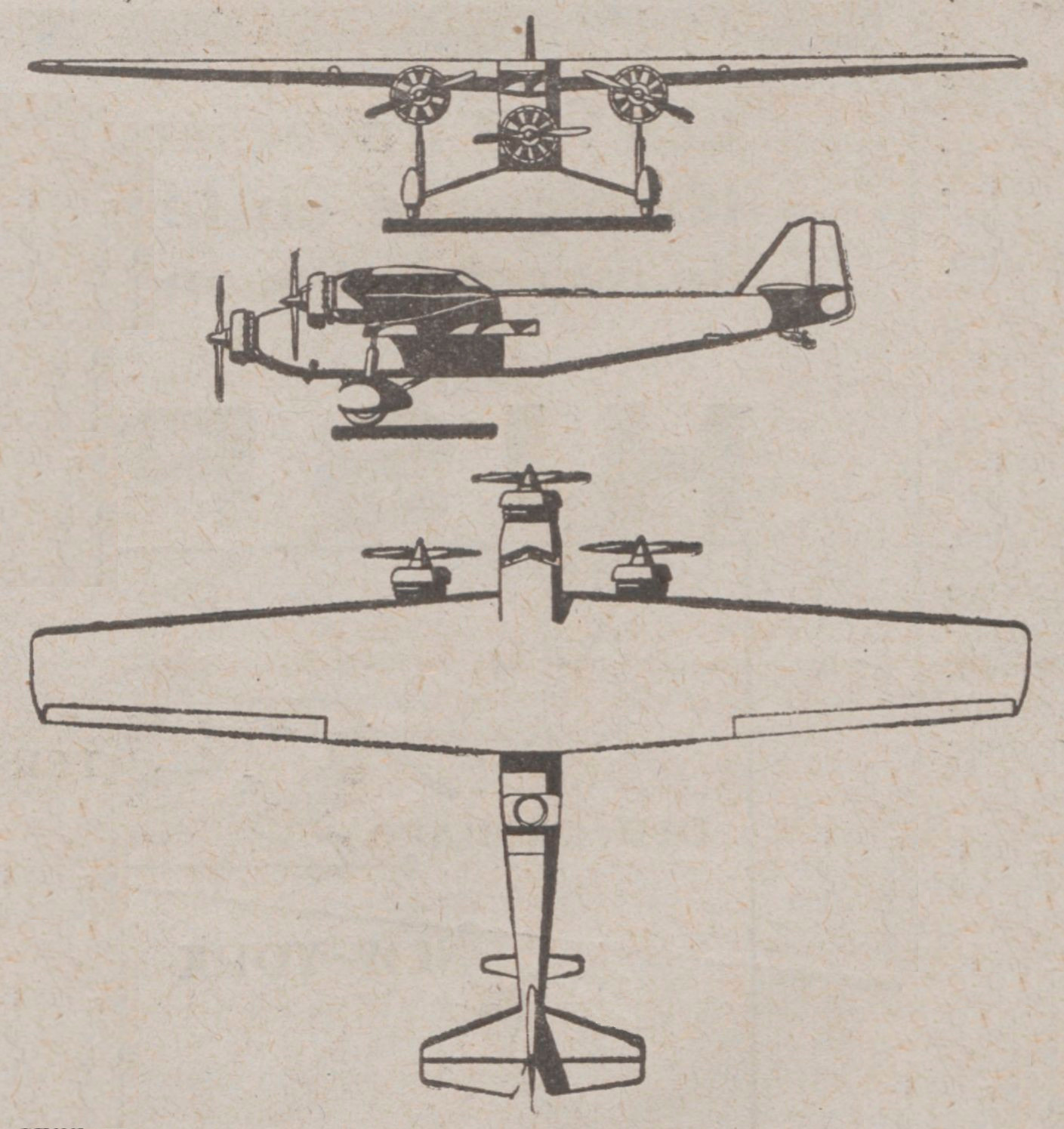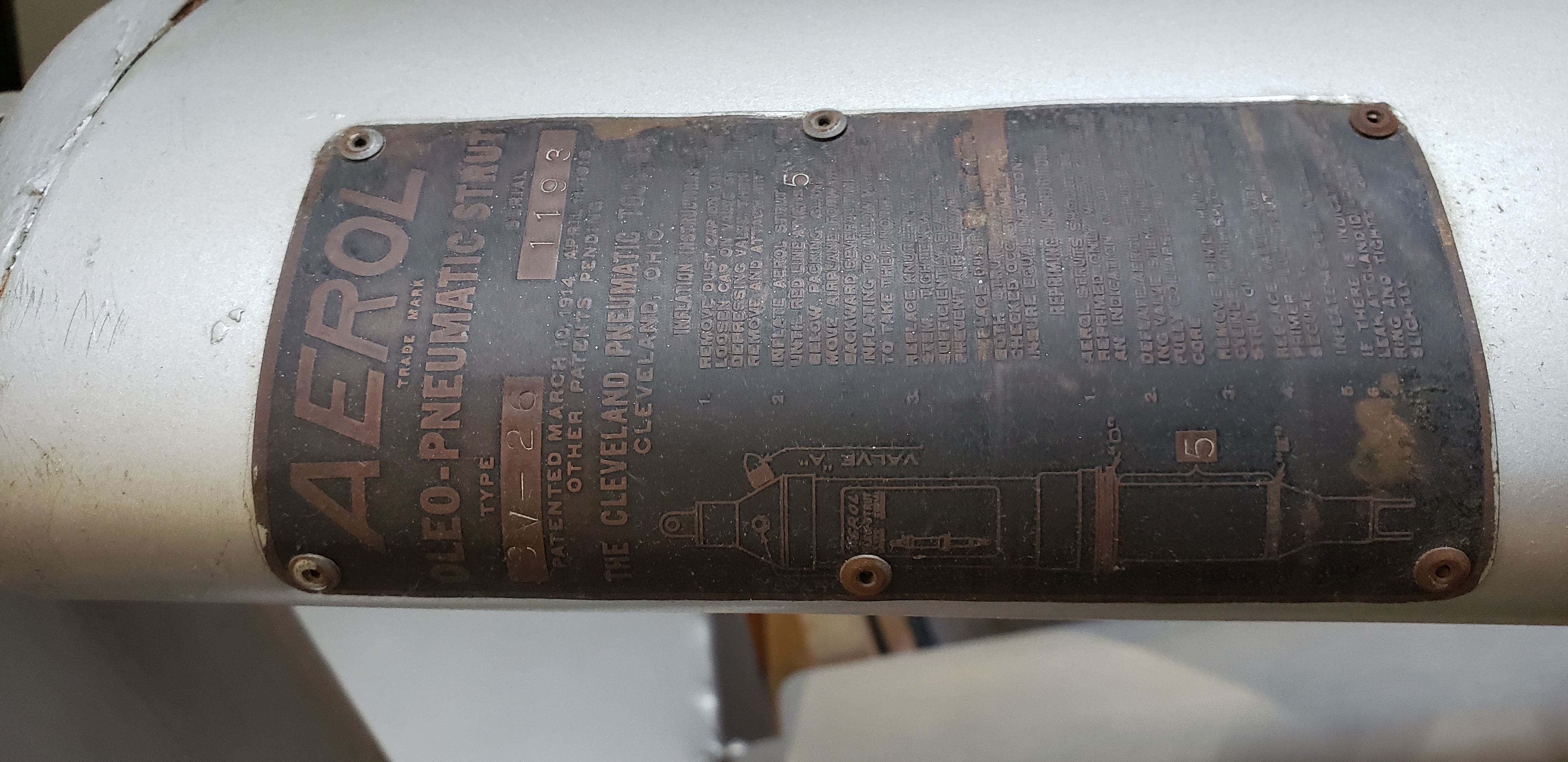|
Lorraine-Hanriot LH.70
The Lorraine-Hanriot LH.70 or S.A.B. LH.70 was a French trimotor designed to a 1930 government programme for a colonial policing aircraft. Only two were built. Design The LH.70 was entirely conceived and directed by the Société Aérienne Bordelaise (S.A.B), one a series of nine prototype colonial policing aircraft from different manufacturers. The programme was led by the Direction Générale Technique and one of its requirements was for all metal construction to withstand the hot and humid climates of French African colonies. Another was to provide a large and flexible load carrying space, so it could be used for variety of tasks. It had a high wing of trapezoidal plan, built in three parts: a short central section which joined the fuselage and two outer panels occupying the great majority of the span. The wings were constructed around four spars and, like the rest of the aircraft were duralumin skinned. There were high aspect ratio ailerons over more than half the span ... [...More Info...] [...Related Items...] OR: [Wikipedia] [Google] [Baidu] |
WikiProject Aircraft
A WikiProject, or Wikiproject, is a Wikimedia movement affinity group for contributors with shared goals. WikiProjects are prevalent within the largest wiki, Wikipedia, and exist to varying degrees within sister projects such as Wiktionary, Wikiquote, Wikidata, and Wikisource. They also exist in different languages, and translation of articles is a form of their collaboration. During the COVID-19 pandemic, CBS News noted the role of Wikipedia's WikiProject Medicine in maintaining the accuracy of articles related to the disease. Another WikiProject that has drawn attention is WikiProject Women Scientists, which was profiled by '' Smithsonian'' for its efforts to improve coverage of women scientists which the profile noted had "helped increase the number of female scientists on Wikipedia from around 1,600 to over 5,000". On Wikipedia Some Wikipedia WikiProjects are substantial enough to engage in cooperative activities with outside organizations relevant to the field at issue. For e ... [...More Info...] [...Related Items...] OR: [Wikipedia] [Google] [Baidu] |
Trailing Edge
The trailing edge of an aerodynamic surface such as a wing is its rear edge, where the airflow separated by the leading edge meets.Crane, Dale: ''Dictionary of Aeronautical Terms, third edition'', page 521. Aviation Supplies & Academics, 1997. Essential flight control surfaces are attached here to control the direction of the departing air flow, and exert a controlling force on the aircraft. Such control surfaces include ailerons on the wings for roll control, elevators on the tailplane controlling pitch, and the rudder on the fin controlling yaw. Elevators and ailerons may be combined as elevons on tailless aircraft. The shape of the trailing edge is of prime importance in the aerodynamic function of any aerodynamic surface. George Batchelor has written about: :“ ... the remarkable controlling influence exerted by the sharp trailing edge of an aerofoil on the circulation.”Batchelor, G. K. (1967), ''An Introduction to Fluid Dynamics'', p.438, Cambridge University Press. ... [...More Info...] [...Related Items...] OR: [Wikipedia] [Google] [Baidu] |
Tailskid
Conventional landing gear, or tailwheel-type landing gear, is an aircraft undercarriage consisting of two main wheels forward of the center of gravity and a small wheel or skid to support the tail.Crane, Dale: ''Dictionary of Aeronautical Terms, third edition'', page 133. Aviation Supplies & Academics, 1997. From the Ground Up, 27th edition, page 11 The term taildragger is also used, although some argue it should apply only to those aircraft with a tailskid rather than a wheel. The term "conventional" persists for historical reasons, but all modern jet aircraft and most modern propeller aircraft use tricycle gear. History In early aircraft, a tailskid made of metal or wood was used to support the tail on the ground. In most modern aircraft with conventional landing gear, a small articulated wheel assembly is attached to the rearmost part of the airframe in place of the skid. This wheel may be steered by the pilot through a connection to the rudder pedals, allowing the rudder ... [...More Info...] [...Related Items...] OR: [Wikipedia] [Google] [Baidu] |
Hydraulic
Hydraulics (from Greek: Υδραυλική) is a technology and applied science using engineering, chemistry, and other sciences involving the mechanical properties and use of liquids. At a very basic level, hydraulics is the liquid counterpart of pneumatics, which concerns gases. Fluid mechanics provides the theoretical foundation for hydraulics, which focuses on the applied engineering using the properties of fluids. In its fluid power applications, hydraulics is used for the generation, control, and transmission of power by the use of pressurized liquids. Hydraulic topics range through some parts of science and most of engineering modules, and cover concepts such as pipe flow, dam design, fluidics and fluid control circuitry. The principles of hydraulics are in use naturally in the human body within the vascular system and erectile tissue. Free surface hydraulics is the branch of hydraulics dealing with free surface flow, such as occurring in rivers, canals, lakes, estuar ... [...More Info...] [...Related Items...] OR: [Wikipedia] [Google] [Baidu] |
Oleo Strut
An oleo strut is a pneumatic air–oil hydraulic shock absorber used on the landing gear of most large aircraft and many smaller ones. This design cushions the impacts of landing and damps out vertical oscillations. It is undesirable for an airplane to bounce on landing as it could lead to a loss of control, and the landing gear should not add to this tendency. A steel coil spring stores impact energy from landing and then releases it, while an oleo strut instead absorbs this energy, reducing bounce. As the strut compresses, the spring rate increases dramatically because the air is being compressed. The viscosity of the oil dampens the rebound movement. History and applications The original design for the oleo-pneumatic shock-absorbing strut was patented by British manufacturing conglomerate Vickers Armstrong during 1915. It had been derived from the recuperative gear design of the Vickers gun, controlling recoil by forcing oil through precisely sized orifices. Vickers' oleo stru ... [...More Info...] [...Related Items...] OR: [Wikipedia] [Google] [Baidu] |
Landing Gear
Landing gear is the undercarriage of an aircraft or spacecraft that is used for takeoff or landing. For aircraft it is generally needed for both. It was also formerly called ''alighting gear'' by some manufacturers, such as the Glenn L. Martin Company. For aircraft, Stinton makes the terminology distinction ''undercarriage (British) = landing gear (US)''. For aircraft, the landing gear supports the craft when it is not flying, allowing it to take off, land, and taxi without damage. Wheeled landing gear is the most common, with skis or floats needed to operate from snow/ice/water and skids for vertical operation on land. Faster aircraft have retractable undercarriages, which fold away during flight to reduce drag. Some unusual landing gear have been evaluated experimentally. These include: no landing gear (to save weight), made possible by operating from a catapult cradle and flexible landing deck: air cushion (to enable operation over a wide range of ground obstacles and wat ... [...More Info...] [...Related Items...] OR: [Wikipedia] [Google] [Baidu] |
Trim Tab
Trim tabs are small surfaces connected to the trailing edge of a larger control surface on a boat or aircraft, used to control the trim of the controls, i.e. to counteract hydro- or aerodynamic forces and stabilise the boat or aircraft in a particular desired attitude without the need for the operator to constantly apply a control force. This is done by adjusting the angle of the tab relative to the larger surface. Changing the setting of a trim tab adjusts the neutral or resting position of a control surface (such as an elevator or rudder). As the desired position of a control surface changes (corresponding mainly to different speeds), an adjustable trim tab will allow the operator to reduce the manual force required to maintain that position—to zero, if used correctly. Thus the trim tab acts as a servo tab. Because the center of pressure of the trim tab is farther away from the axis of rotation of the control surface than the center of pressure of the control surface, the ... [...More Info...] [...Related Items...] OR: [Wikipedia] [Google] [Baidu] |
Elevator (aeronautics)
Elevators are flight control surfaces, usually at the rear of an aircraft, which control the aircraft's pitch, and therefore the angle of attack and the lift of the wing. The elevators are usually hinged to the tailplane or horizontal stabilizer. They may be the only pitch control surface present, and are sometimes located at the front of the aircraft (early airplanes) or integrated into a rear "all-moving tailplane", also called a slab elevator or stabilator. Elevator control effectiveness The elevator is a usable up and down system that controls the plane, horizontal stabilizer usually creates a ''downward'' force which balances the nose down moment created by the wing lift force, which typically applies at a point (the wing center of lift) situated aft of the airplane's center of gravity. The effects of drag and changing the engine thrust may also result in pitch moments that need to be compensated with the horizontal stabilizer. Both the horizontal stabilizer and ... [...More Info...] [...Related Items...] OR: [Wikipedia] [Google] [Baidu] |
Balanced Rudder
Balanced rudders are used by both ships and aircraft. Both may indicate a portion of the rudder surface ahead of the hinge, placed to lower the control loads needed to turn the rudder. For aircraft the method can also be applied to elevators and ailerons; all three aircraft control surfaces may also be mass balanced, chiefly to avoid aerodynamic flutter. Ships A balanced rudder is a rudder in which the axis of rotation of the rudder is behind its front edge. This means that when the rudder is turned, the pressure of water caused by the ship's movement through the water acts upon the forward part to exert a force which increases the angle of deflection, so counteracting the pressure acting on the after part, which acts to reduce the angle of deflection. A degree of semi-balance is normal to avoid rudder instability i.e. the area in front of the pivot is less than that behind. This allows the rudder to be moved with less effort than is necessary with an unbalanced rudder. The ... [...More Info...] [...Related Items...] OR: [Wikipedia] [Google] [Baidu] |
Tailplane
A tailplane, also known as a horizontal stabiliser, is a small lifting surface located on the tail (empennage) behind the main lifting surfaces of a fixed-wing aircraft as well as other non-fixed-wing aircraft such as helicopters and gyroplanes. Not all fixed-wing aircraft have tailplanes. Canards, tailless and flying wing aircraft have no separate tailplane, while in V-tail aircraft the vertical stabiliser, rudder, and the tail-plane and elevator are combined to form two diagonal surfaces in a V layout. The function of the tailplane is to provide stability and control. In particular, the tailplane helps adjust for changes in position of the centre of pressure or centre of gravity caused by changes in speed and attitude, fuel consumption, or dropping cargo or payload. Tailplane types The tailplane comprises the tail-mounted fixed horizontal stabiliser and movable elevator. Besides its planform, it is characterised by: *Number of tailplanes - from 0 ( tailless or canard) t ... [...More Info...] [...Related Items...] OR: [Wikipedia] [Google] [Baidu] |






